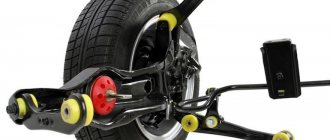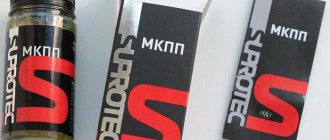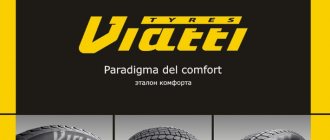How to prepare a field for off-roading
The choice of a Niva car is, as a rule, determined by the optimal ratio of price and consumer qualities.
The cross-country ability of this car is slightly higher when compared with foreign cars. Even if such cross-country ability does not suit the owner, it is necessary to prepare the Niva for off-road use. At the same time, the training program should not contain unnecessary costs, but at the same time maintain the versatility of the machine, without turning it into a tractor. You will need
- The original Niva car. Off-road preparation kits.
Instructions
1
Install a special camshaft that shifts the peak torque towards low speeds. This is the simplest and most financially beneficial way to slightly increase torque and increase traction at the bottom. At the same time, sand the intake and exhaust ports of the cylinder head and the intake manifold.
2
Seal
air
filter and install a snorkel to overcome water obstacles. Remove the standard fan, and instead install a double electric fan with forced control from the passenger compartment. When overcoming a deep ford, it can be turned off so as not to flood the ignition system with water. Equip the ignition system itself with additional waterproofing.
3
Install larger wheels to increase ground clearance. Practice shows that the optimal size is 235/75R15. When installing such wheels, road
clearance
increases to 245 mm. Even larger wheels will increase the stress on the transmission and reduce its reliability.
4
Install the wheels
disks
15 x 6 inches to accommodate wider tires. To compensate for the weight of wider wheels, the rims should be
choose
forged.
5
Install the main pairs with a gear ratio of 4.7 instead of the standard 3.9. This will give some reserve of traction without significant losses in dynamism and speed. An intermediate option is the main pairs with the number 4.3 from the VAZ-2101.
6
You can “raise” the suspension to accommodate larger wheels by using longer springs at the front and spring spacers at the rear.
7
Enlarge the wheel arches. Cover the cut areas with soft wing extensions.
8
Install long-travel shock absorbers to increase suspension travel. Adjustable shock absorbers are recommended to allow
tune
suspension for new characteristics. Strengthen the shock absorber mounting points and front side members.
9
Equip the rear axle with a self-locking differential.
10
Check and install (if necessary) the front towing eyes. Better yet, hooks. Place a towbar at the rear.
11
Strengthen the bumpers by placing a standard pipe, profile or channel inside. Strengthen the thresholds. Install a baby carrier.
12
Install an electric winch with a traction force of 3-4 tons. You can put it on the front bumper or inside the trunk (if the Niva is preparing for competitions and not for long trips).
Helpful advice
The original vehicle must be in good working order and, if possible, not very worn out.
Which car to choose?
You can compare these two SUVs for a very long time, but based on what has been discussed, you can draw preliminary conclusions. Of course, some people like a low and compact SUV, while others like to stand out on the road by driving a powerful car.
In terms of technical indicators, the UAZ Patriot is certainly better, since it has a more powerful engine that allows it to overcome obstacles of various kinds, transmission and other technical indicators. The Chevrolet Niva is inferior to the UAZ in this regard, but one cannot speak badly about it either. Shniva is good in its own way, since it is designed more for the contingent who make weekly fishing, hunting or expedition trips. The Patriot is more intended for long trips and expeditions, which is why the cars differ from each other.
To choose what is best for yourself, you should decide why you need an SUV and do you need all-wheel drive at all? After all, all-wheel drive is not only a pleasant addition, but also several tens and sometimes hundreds of thousands of rubles to the cost of the car. Repairing an additional bridge will require quite a lot of investments, so it is important to decide for yourself about these advantages.
To summarize, it is important to note that Chevrolet Niva vs UAZ Patriot are excellent options for off-road vehicles that the Russian auto industry can be proud of. Of course, there are some areas that require improvement, but overall these SUVs show excellent performance, as can be seen in the video below.
From the video you can evaluate for yourself all the cross-country ability parameters of both SUVs. Shniva practically keeps up with Patriot, for which she has great respect
Also interesting: Do-it-yourself Niva 2121 elevator: drawings, dimensions
Transmission Features
The transmission of both SUVs is worthy of respect as they are equipped with 5-speed gearboxes with a mandatory transfer case. The transmission is controlled using a lever located in the interior of both cars, and the transfer case is controlled using a similar lever. Only on restyled Patriot models, instead of a lever, a washer is installed to switch transfer case control modes.
It is also important to note that UAZ Patriot SUVs are equipped with a transmission from the Korean company Daimos, while the Shniva has a Russian transmission model. The only difference in controlling the all-wheel drive mode is that the Shniva operates with all-wheel drive always on. The UAZ Patriot has a permanent drive - rear, and an additional front drive, connected using wheel couplings and a transfer case.
What type of salons do they have?
UAZ Patriot has high ground clearance, which sometimes causes difficulties for boarding not only passengers, but also the driver himself. As a result, Patriots are equipped with special thresholds for the convenience of passengers and the driver entering the cabin.
Exterior view of the Patriot's interior
Shnivy also has a similar threshold, only it is used most often as an element of interior decor, since getting into the salon does not cause much difficulty. The UAZ interior has pleasant seats, which can be made both in Russia and abroad, depending on the year of manufacture of the model. There is a lot of space in the cabin, and the high ground clearance has its plus - an excellent view of the road surface.
There is not much space in the cabin of the Niva Chevrolet, although it is possible to accommodate 5 people along with the driver. Tall rear passengers will complain about the small amount of space, so the Shniva is designed for an average passenger configuration. The seats and interior trim are pleasing to the eye and pleasantly surprise not only the owner, but also the passengers.
If we compare Shniva vs Patriot, then in terms of capacity the latter wins.
In terms of suspension, we should note the Shniva, which copes well with various types of bumps and handles smoothly on potholes. The Patriot is much tougher in this regard, so you can see that the suspensions of these models are completely different.
Exterior view of the Chevrolet Niva interior
Technical specifications, configurations and prices
The main changes are planned on the engine. It is planned to install a sixteen-valve engine with a volume of 1.7 liters. This will make it possible to increase power by more than a dozen “horses”. The internal combustion engine will run on gasoline. There is information that the internal combustion engine is taken from Priora and will work together with a manual gearbox. All these changes will make the Niva more dynamic, and the car will consume less fuel.
The outdated crosspieces were replaced with hinges, which gave the car's chassis stability. According to the designers, the equipment of the machine will include:
- improved front suspension;
- electric drive that blocks the center differential;
- improved braking system.
The prices will look something like this:
Pros and cons of a regular Niva compared to a Chevy Niva
Let us highlight the characteristic features relating to both the 21st Niva and subsequent models VAZ-21213 and VAZ-21214. We will not consider the Long Niva (VAZ-2131), pickup truck (VAZ-2329) and other modifications. So, let's start with the undeniable advantages of the regular Niva compared to the Shevik:
- Patency. Due to the short wheelbase, the 21st model has better geometric cross-country ability.
- Price. In the same condition, a regular Niva will be 1.5-2 times cheaper than a Shevik.
- Availability and low cost of spare parts. Especially for body parts.
- "Psychological passability." An ordinary Niva is not so scary to be scratched or slightly dented, unlike a Chevrolet.
- The best predisposition for off-road tuning.
Now let's list the disadvantages of the 21st Niva compared to the Chevrolet Niva:
- Low level of comfort. Noise, vibration, lack of power steering (on old Nivas), uncomfortable driving position.
- Outdated design. Although this is a controversial point, because the design of an ordinary Niva is recognizable all over the world, which cannot be said about the Shniva.
- Poor aerodynamics.
- Poor handling on the highway.
- Cramped interior. This includes an uncomfortable seating position in the back row and a small trunk.
Everything is clear with the advantages and disadvantages of the regular Niva compared to the Shevik. Let's move on to the Chevrolet Niva.
Disadvantages of the UAZ
The UAZ car is quite well known among fans of domestic cars, but was originally produced as a military vehicle. Some of the disadvantages of the car include the following:
- UAZ is a car that requires decent fuel consumption; it consumes more than 15 liters of gasoline per 100 km. However, this minus can be turned into a plus, because the SUV has 2 tanks, which means you can visit the gas station less often.
- In almost all configurations, the UAZ, like the Niva, is equipped with a 5-speed gearbox and a 2-speed transfer case, which reduces the ride quality on it, unlike its foreign counterparts.
- UAZ is a fairly massive and heavy car, so you can forget about its driving dynamics. Turning too quickly can result in a body roll that can frighten inexperienced drivers. Many also complain that the heavy and stiff steering wheel is difficult to control. It can also cause the vehicle to get stuck in the mud.
- Also, the disadvantages of the car include not the best waterproofing, due to which the windows fog up and leakage occurs through the joints of the panel and glass.
- Many drivers complain about the wheel hanging on the rear door. It causes the door hinges to sag, so after purchasing the car, the door should be strengthened with a special device resting on the rear bumper or body.
Improve the good
At the same time, many Soviet motorists abandoned the Niva due to the fact that, in comparison with the Zhiguli, it was not very practical - a small trunk, a cramped interior, and getting into the back seat through the small side doors was not very convenient. Perhaps this is why, already in the late eighties, VAZ began working on a modernized version of the car, in which the Niva’s features would not be so pronounced.
The first most important parameter that the designers decided to change was the wheelbase. Its increase by 150 mm was supposed to both facilitate the entry and exit of rear passengers and increase legroom. In addition, an increase in the overall length of the body should have a beneficial effect on the volume of the luggage compartment.
Already in 1979, a prototype VAZ-2121U was manufactured. The wheelbase was lengthened in an interesting way: by cutting the body, a wider pillar was welded into the central part, while the length of the front doors remained the same. Of course, the car looked a little disproportionate, but for “search” work and identifying differences in the behavior of the elongated Niva, this option was quite suitable.
| Sketches according to which designers lengthened the VAZ-2121 | One of the first prototypes |
The second important innovation that the modernized car was supposed to receive was a different transmission. It was assumed that instead of a separate transfer case, the updated Niva would have a gearbox, where both the transfer case and the regular one would be combined into one unit. This should have had a beneficial effect on comfort - after all, let’s be honest, the level of vibrations and noise in the all-wheel drive Niva was noticeably higher than in ordinary Zhiguli.
VAZ also closely followed the achievements of the global automobile industry. After all, at that time Audi was just beginning to shine victoriously on the rally tracks with its Quattro all-wheel drive model.
Also interesting: How the differential lock works on the Niva: diagram
Ross
The Quattra differed from the Niva in its layout, as well as in the types of suspensions made according to the McPherson scheme both front and rear. It was McPherson who was supposed to appear on the production G8, so this decision was not at all unusual for the VAZ team. The only difficulty that had to be solved was the correct combination of the Niva’s permanent all-wheel drive with MacPherson struts, which, as is known, require the presence of characteristic “cups” on the body.
During the work on modernizing the Niva in Togliatti, in factory conditions, they decided to test the viability of the 4x2 modification, that is, the rear-wheel drive Niva, devoid of a transfer case, front axle and one of the cardans. After all, as soon as the VAZ-2121 went on sale, many Soviet motorists were perplexed by the fact that the front wheel drive of this car was non-disconnectable.
| After modernization, the Niva was supposed to have independent suspensions with MacPherson struts | All-wheel drive - in the case of the Niva, it is not only all-wheel drive, but also permanent |
Of course, most designers were against such “tuning”, since due to the short wheelbase and weight distribution, the car, deprived of a leading “front end”, became too “fidgety” and unstable. Yes, the curb weight was reduced by several tens of kilograms, fuel consumption was reduced by 10-15%, but... at the same time, cross-country ability deteriorated catastrophically, and even on a slippery road, the rear-wheel drive Niva could suddenly fall into an uncontrolled skid.
During testing at the plant, several emergency situations arose that gave a clear answer: the production Niva can only be all-wheel drive. True, not so long ago at VAZ they returned to this topic again and even voiced the possibility of releasing a rear-wheel drive Niva - but again the matter was limited to words. And apparently, for the better.
Work on modernizing the Niva at that time was somewhat hampered by the G8, to which almost all the forces at the plant were thrown, and the ministry allocated funding for this particular model, while no official directives “from above” were received regarding the modifications of the Niva.
However, based on the results of the improvements, the plant planned to develop and submit to the Ministry a technical specification for the updated Niva already in 1985, and a year later they were going to make prototypes based on it. Thus, by the end of the eighties, the second version of the Niva could theoretically be put on the production line, which would be very useful considering that the basic VAZ-2121 had been produced since 1977.
However, in the course of further work, a rather disappointing conclusion was made: the main shortcomings of the 2121 model cannot be overcome with “little loss” through modernization, so the development of a new car (with the index 2123) is necessary.
At this moment, in fact, VAZ decided that the Niva’s developments would form the basis of the next generation all-wheel drive, which in the early 2000s became the Niva with the surname Chevrolet.
Review of the Niva4x4 service.
This is of course a separate piece of shit. Not service. At first it captivates with its novelty. Filled floors, cleanliness, washing, painting. In short, there is everything. In addition to proper maintenance and constant screwing.
I stopped by to see them recently. Overhaul the transfer case, replace brake calipers, pads and gearbox oils. And most importantly: replacing the cylinder head gasket. I struck here out of stupidity. I called in advance and clarified the cost of the work. They announced a maximum of 16,000 rubles.
After the repair, I receive an invoice with the amount of 24,000 rubles. NIVA4x4, in addition to the stated work, installed breather outlets in the engine compartment (2,400 rubles), tightened the jet thrust (800 rubles) and I don’t remember anything else. Replacing the brake disc and pads is a separate job. First they change the brake disc and put everything back. Then they disassemble and change the pads. As a result, I noticed this late, there was work to replace brake discs (~2000 rubles) and replace pads (1600 rubles). In short, this is from the series we screwed you up. I won't go near them anymore.
NIVA4x4 service premises
The premises are neat and clean. Self-leveling floors. They are cleaning up everywhere. There is a small sink.
Running layouts
But in 1988, no one at the plant could have imagined that a golden cross would one day appear on the Niva’s grille. At that time, they were testing running prototypes with the simple names XM-01 and XM-02, during which the designers were evaluating and fine-tuning the chassis and steering. The prototypes were compared, of course, with an ordinary old Niva.
In addition to the wide B-pillar, the prototypes differed in bumpers and rear optics from the VAZ-2107.
The results turned out to be encouraging: not much inferior to the VAZ-2121 in cross-country ability, the running prototypes of the “improved Niva” in terms of driving performance and level of comfort were comparable even to the V8, not to mention already about Zhiguli!
At the same time, not only stability and controllability improved, but also dynamic qualities - overtaking on a suburban highway was much easier for a car with a 1.8-liter engine than for a regular Niva with a 1.6-liter VAZ-2106 engine. It became obvious that in any case, the engine displacement of the new model would need to be increased.
Another important advantage of the prototypes over the production Niva is the “light steering”, realized through the use of a rack and pinion mechanism of the original design, the forces on which were reduced by 60%. In fact, in this parameter the prototypes were comparable to the front-wheel drive Samara!
True, the testers noted that the improvement in stability, controllability and smoothness was not in vain - the rolls increased compared to the “twenty-first”, and noticeable shocks came to the steering when moving in a rut.
The front and rear independent suspensions of the XM-01 provided better cross-country ability, because the car simply did not have the characteristic “stocking” of the rear axle.
Also interesting: Lada Niva 4x4 2131 (5-door) - prices, specifications. Mos BRONTO: Moscow, St. Petersburg, Nizhny Novgorod, Rostov, Tula, Yaroslavl, Minsk, Mogilev, Grodno.
Surprisingly, practical tests of prototypes on heavy off-road conditions (including winter roads) showed that the XM-01 is superior in cross-country ability not only to its “big sister” model 2121, but also to heavy SUVs like the domestic UAZ and the American Chevrolet Blazer, which also took part in comparative races .
Tests on paved roads allowed the designers to understand what needs to be changed in the suspension and rack and pinion steering settings in order to improve the driving performance of the new model in comparison with the Niva. Almost immediately, VAZ specialists came to the conclusion that installing a damper and hydraulic power steering would help reduce the level of vibrations and shocks on the steering wheel.
Checking the off-road potential also helped answer the question of what the best all-purpose tires for the Niva should be. It is interesting that the prototypes used very unusual wheels - machined hubs of a regular Niva wheel with rims from UAZ, on which Ya-288 tires of size 185/80 R15 from the RAF-2203 minibus were installed.
| The XM-01 had excellent cross-country ability - perhaps even better than a regular Niva! | Prototype wheel: Niva hub, UAZ rim and Rafov tires |
It turned out that the cross-country ability of the prototypes strongly depends on the tire pressure: only when the parameter was reduced to 1.0 and 1.5-1.8 atmospheres did the tires stop burying themselves in loose sand.
The direct dependence of cross-country ability on the tread pattern and mixture composition forced the designers to intensify cooperation with NIIShP. Their result was experimental tires Model-4 size 195/70 R15. It was the “fifteenth diameter” that was approved for the new model, since the narrow and high 16-inch VLI-10 tires (not to mention the toothy VLI-5) did not provide the required parameters for directional stability and smoothness.
However, in the period from 1988 to 1991, VAZ, together with NIISHP, worked on different tire sizes for the future model 2123. In particular, even the option of 185/65 R15 wheels was considered - that is, the same size as the modern Logan. Of course, on such low-profile tires the XM-01 immediately lost a lot of ground clearance and looked rather awkward.
| With a low profile, the prototype resembled the version with Volgov wheels installed. This solution was often practiced by home-grown tuners during Soviet times. | ||
While working on the prototypes, the designers tried to find a new place for the spare wheel, which they initially wanted to place outside the body under the trunk floor (as on the Renault Duster). However, in the end, the spare tire was moved to the tailgate, although some Tolyatti designers really did not like this.
The spare wheel on the prototype was installed under the trunk. Pay attention to the rear lights - they are from seven
During practical tests, it was revealed that the use of a MacPherson scheme in the rear suspension is not very appropriate, and the size of the front struts required increasing.
They did their job
The current models made it possible to answer an important question - what to do with an ordinary Niva? It was decided that the developments on the XM-01/02 prototypes would be implemented as part of the work on the 2123 model, but in the case of the VAZ-2121 they decided to limit themselves to a little bloodshed - lengthen the rear door to the bumper, somewhat modernize the interior and increase the engine displacement to 1 .7-1.8 liters.
The ups and downs of the nineties associated with the collapse of the USSR did not have the best effect on the fate of the new models. If the “two hundred and thirteenth”, albeit with delays and complications, was nevertheless able to be put into mass production in several stages, then the model 2123 was able to be fully mastered only within the framework of a joint venture with General Motors.
Fundamental differences between the prototypes and the VAZ-2121:
- 1.8 l engine
- rack and pinion steering mechanism
- independent suspensions
- brake system diagram
- spare wheel location
- 15" wheels
The article uses data and images from the books “The Flame of High Thought” (volumes 2 and 3, Togliatti, 2004-2008)
Read news about the new Niva
- Lada 4×4 Taiga (photos and differences) » Lada.Online
- Non-adjustable front hubs Niva and Chevrolet Niva with a reinforced hub, a double-row bearing from an Iveco truck and additional oil seals with ABS
- Lada Niva 4x4 2131 (5-door) - prices, specifications. Mos BRONTO: Moscow, St. Petersburg, Nizhny Novgorod, Rostov, Tula, Yaroslavl, Minsk, Mogilev, Grodno.
- Replacing the wheel bearing Niva Chevrolet: front hub and axle shaft
- Chevrolet Niva Wheel Sizes - Size Charts
- Recommended tire and wheel sizes for Lada 4×4 » Lada.Online
- Non-adjustable wheel bearings for the field
- Niva Chevrolet front hub repair
Fuel consumption
An important aspect that every driver thinks about when choosing a future car. The cost of fuel at the moment is quite decent and not everyone can afford to have a car due to high fuel prices, so having a car with high fuel consumption is irrational.
Fuel consumption on a Chevrolet Niva is 10 liters per 100 km with a mixed driving schedule, but the Patriot will need 2.5-3 liters more than the Shnivy. The Patriot has one feature - the presence of 2 tanks, which, unwillingly, indicates that this giant loves fuel. In urban driving mode, the Shnivy's consumption is about 13 liters per 100 km, but the Patriot consumes about 15-16 liters. Therefore, if the moment of consumption is very important, then preference should be given to Shniva.
Also interesting: How to remove a wheel bearing in a field. Replacing and adjusting the front wheel bearing Niva.











